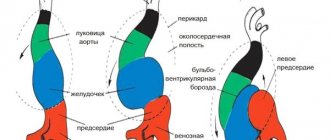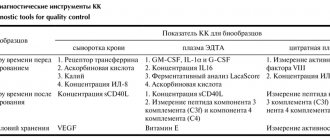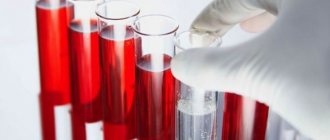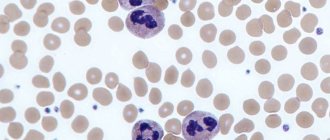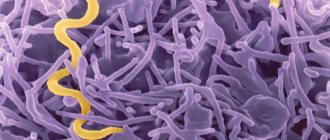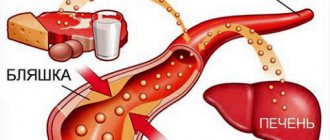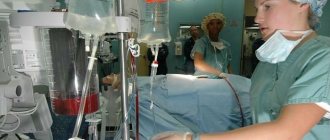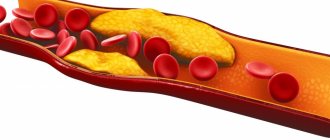This is a blood test to determine its clotting ability. A hemostasiogram (coagulogram) evaluates the state of blood flow in all organs and systems.
A blood test for a hemostasiogram is done within one day. In laboratories, a blood test for a hemostasiogram (coagulogram) differs in parameters, measurement methods and, accordingly, information content and cost. The state of the coagulation system is a functional analysis that reflects changes in blood coagulation or the hemostatic system. The hemostasis system changes depending on external or internal factors. Factors influencing changes in the hemostatic system include age over 40 years, taking OCs and HRT, smoking, surgery, trauma, pregnancy, IVF protocol, etc. Accordingly, the results of the hemostasiogram analysis with the above factors will change.
It is important to monitor the function of blood clotting in pregnant women, patients with oncology and disorders of the cardiovascular system, when prescribing OCs and HRT, when planning surgery; also in patients with a family history of thrombosis, etc.
Complexes with this research
Miscarriage Identification of the main causes of miscarriage RUR 28,220 Composition
Examination during pregnancy. 3rd trimester 5,820 ₽ Composition
Coagulogram Study of the functional state of hemostasis RUB 1,190 Composition
IN OTHER COMPLEXES
- Joining IVF RUB 15,090
- Pregnancy planning. Clinical indicators RUB 3,890
- Female infertility RUB 9,760
- Examination during pregnancy. 1st trimester 10,260 RUR
- Extended coagulogram RUB 2,790
When is an APTT test prescribed?
APTT is part of the blood tests for hemostasis, which are taken when planning pregnancy. The test is also prescribed for genetic predisposition to thrombosis, spontaneous bleeding of unknown origin, diagnosis of hemophilia, treatment of heart attack, during pre- and postoperative examinations.
Based on the results of the analysis, the presence of coagulation inhibitors is determined - signs of systemic lupus erythematosus and antiphospholipid syndrome, severe autoimmune pathologies. The APTT test is also used to monitor heparin therapy.
Detailed description of the study
APTT - activated partial thromboplastin time - a test to assess the state of the blood coagulation system. The study is carried out by adding substances to citrated platelet-poor plasma that help directly assess the functioning of plasma factors. They are proteins that play a key role in the formation of a blood clot.
The hemostatic system is a set of various mechanisms aimed at maintaining a balance between coagulation and anticoagulation factors in the blood. This avoids the pathological formation of blood clots (thrombi) or the tendency to bleed.
The formation of a blood clot (thrombus) occurs in several stages. A primary thrombus is formed by gluing blood platelets - platelets - to each other. Next, special proteins - coagulation factors - are included in the process. These proteins are produced in the liver. The result of their action is the conversion of prothrombin into thrombin under the influence of factor III (thromboplastin) and the formation of a secondary thrombus.
Activated partial thromboplastin time is the period during which a clot is formed in a test tube along with special substances that imitate the action of coagulation factors. The purpose of the test is to assess the state of the so-called intrinsic coagulation pathway (involving factors VIII, IX, XII, XI).
Prolongation of APTT in adults and children indicates hypocoagulation - a decrease in the ability to form blood clots. This increases the risk of bleeding. This can occur with hereditary and acquired defects in coagulation factors. Hereditary - hemophilia A and B, von Willebrand disease, hereditary factor XI deficiency. Acquired ones are caused by disruption of the liver, where coagulation factors are formed, exposure to anticoagulants, severe infectious diseases, and oncological processes.
The shortening of activated partial thromboplastin time reflects the predominance of hypercoagulation - increased blood clotting. A similar situation can be observed with thrombosis, including disseminated intravascular coagulation (DIC) syndrome in the hypercoagulation stage. Early diagnosis of coagulation disorders allows you to avoid serious consequences.
There are also physiological conditions under which a shortening of the APTT is observed—pregnancy.
The APTT indicator is used for monitoring during treatment with heparin in order to track the moment of excessive blood thinning. During myocardial infarction, the duration of clot formation determines the effectiveness of anticoagulant treatment, which indirectly reflects vascular patency.
Thus, determining the APTT helps to quickly assess the state of hemostasis, together with other data, suspect severe congenital and acquired diseases, and prescribe timely treatment.
How to prepare for donating blood for a hemostasiogram
Blood is donated on an empty stomach, from a vein. 12 hours before hemostasis, you must adhere to a diet excluding fatty and protein foods. The last meal (light snack) is possible 4 hours before blood sampling. It is prohibited to drink alcohol the day before the test. It is recommended to replace any drinks with water. This is done so that sugar does not affect the overall picture.
If you are taking medications that may affect the results of the data, this must be indicated when taking the test. This will be taken into account when deciphering the testimony.
It is not recommended for women to undergo the procedure during menstruation.
It is also better to refrain from playing sports in the previous day, to avoid stress and overexertion. Smokers are advised to give up cigarettes during this time.
The process of drawing blood also affects the accuracy of the result. When collecting from a vein, it is better to use a vacuum system. If this is not possible, then a syringe is used and the blood is allowed to flow on its own.
Indicators
It is extremely problematic to independently understand the results obtained without special education. Based on the results of the hemostasiogram, you must make an appointment with a hemostasiologist or hematologist.
The form indicates the results obtained and the norms given in two columns. These are indicators of prothrombin, aPTT, prothrombin time, prothrombin index, fibrinogen, platelet function, thrombin time, RKMF, INR.
In a detailed analysis, an additional test for D-dimer, lupus anticoagulant, and antithrombin III is often prescribed.
Tests during pregnancy
Hemostasiogram
Pregnancy management
Hemostasiologist during pregnancy
Normal indicators
According to APTT data, the rate at which blood clots is assessed. Ideally, it should be from twenty-four to thirty-six seconds, laboratory referents differ - ADD. With a lack of vitamin K, this time will be longer. In this case, you should be wary of severe blood loss from cuts and deeper wounds. If the time, on the contrary, is less, this means that there is a risk of a blood clot. In this case, during pregnancy the baby will not receive enough nutrients.
The line with data on prothrombin contains the same results, but in percentage equivalent. So prothrombin should be from 78 to 95 to 105 percent.
Fibrinogen should normally be from two to four grams per liter; during pregnancy it can increase.
With normal levels, antithrombin III ranges from 71 to 115 percent,
Exact standards in laboratory abstracts. If deviations are greater or lesser, blood clots or bleeding may appear.
Thrombin time should be from eleven to eighteen seconds, and prothrombin time should be from fifteen to seventeen.
Platelet function is from 30 to 50%, a decrease in function indicates the risk of bleeding or the effectiveness of antiplatelet therapy, an increase indicates an increase in the aggregation function of the blood.
Hemostasiogram in pregnant women
Pregnant women need to especially carefully monitor blood clotting. This will avoid complications during the birth process, as well as throughout pregnancy.
During pregnancy, a hemostasiogram is taken once per trimester or more often if indicated.
The attending physician may prescribe additional tests if there is a threat of miscarriage, also to assess the effectiveness of anticoagulant therapy. It is also recommended to do a hemostasiogram in case of high blood pressure, edema, the presence of protein in a urine test, before surgery, or when prescribing OCs and HRT.
If test results are poor, consultation with a hemostasiologist is necessary.
Do not be alarmed if you suddenly discover that the coagulation rate is slightly higher than required. In pregnant women, this may also be a normal option. This may happen due to changing hormonal levels. For women in an interesting position, it is unstable and can change more than once. The result may be affected by the appearance of an additional circulation that connects the uterus and placenta and an increase in blood volume.
What to do if there is elevated fibrinogen?
The first thing to do if you have high levels of fibrinogen protein 0 is to immediately consult a doctor for further examination of the body. The specialist’s responsibility in this case is to prescribe high-quality therapy to eliminate the underlying disease, which will lead to a gradual independent decrease in protein levels to an acceptable level.
If there is an urgent need, fibrinogen levels can return to normal by taking medications that prevent blood clotting and the formation of blood clots. These include antiplatelet agents, anticoagulants, thrombolytics, fibrinolytics.
Filling your diet with fresh vegetables, seafood, red berries, dark chocolate or cocoa helps reduce the amount of protein in the blood. If all the specialist’s instructions are followed, increased fibrinogen does not pose a threat to the life and health of the patient.
Where to get tested for APTT in Moscow
You can take an APTT test and get advice from an experienced hemostasiologist at the Women's Medical Center on Zemlyanoy Val. Our Hemostasis Pathology Laboratory has high-precision blood analyzers, high-quality reagents and consumables, which guarantees the reliability of the research results.
Along with the APTT test, you have the opportunity to take tests close to it: 2-TEG, extended hemostasiogram, tests for VA and APS, Antithrombin, and also determine the anti-Xa activity of heparin in the blood. In the experimental laboratory of the MLC, we are engaged not only in diagnostics: we research and practice new methods for treating hematological diseases.
In one of the private laboratories you are another statistical unit, but with us you are a patient who is ready to be helped by the best doctors in Moscow.
Benefits of analysis
APTT is a highly focused study that diagnoses several pathologies of hemostasis. The coagulation mechanism of hemostasis ensures the “sealing” of damage in blood vessels with fibrin clots and is influenced by blood coagulation factors.
Using the APTT test, you can detect a deficiency of the main factors affecting coagulation:
- 2nd, prothrombin;
- 5th, proaccelerin;
- 8th, antihemophilic globulin;
- 9th factor;
- 10th, Fr. Stewart-Prower;
- 11th, Dr. Rosenthal;
- 12th, Dr. Hagemann.
Fibrinogen is increased: what does this mean?
Elevated levels of fibrinogen in the blood may mean activation of the blood clotting system, the possibility of excessive thrombus formation, or the occurrence of an acute inflammatory process in the body.
Thus, high fibrinogen protein is observed in severe, abnormal conditions that affect vital organs and the entire body as a whole. Among these diseases are:
- inflammatory-immune damage to connective tissue;
- death of the heart muscle as a result of acute lack of blood supply;
- kidney diseases;
- infectious diseases;
- endocrine diseases (diabetes mellitus);
- pneumonia;
- mild forms of inflammatory process in the liver;
- initial stage of thrombohemorrhagic syndrome;
- tuberculosis;
- oncological diseases.
Also, an increase in fibrinogen levels occurs during pregnancy, which is due to the natural physiology of the female body. Increased rates are observed with oral contraception and taking steroid female sex hormones.
If fibrinogen is below normal
If your blood fibrinogen content is below the established norm, then its clotting occurs slowly, which will cause prolonged bleeding. This may be an acquired condition as a result of concomitant diseases or congenital.
The main reasons for the decrease in the amount of fibrinogen in the blood:
- thrombohemorrhagic syndrome - acute destruction of hemostasis, leading to the appearance of a huge number of microthrombi in the smallest vessels;
- severe hepatology;
- intoxication of the body during pregnancy;
- hypovitaminosis of group C and B12;
- genetic disorders;
- poisoning with toxic substances;
- use of medications that inhibit blood clotting and prevent blood clots;
- increase in the number of blood leukocytes;
- use of anabolic drugs, steroid sex hormones, valproic acid;
- taking Omega-3.
Low fibrinogen levels also occur:
- in people who have given up food of animal origin;
- when consuming antioxidants,
- with low blood alcohol levels.
If the volume of fibrinogen is less than 0.5–1 g/l, then there is a possibility of bleeding of the vessels of the internal organs.
Actions for low fibrinogen
As with increased fibrinogen, the first priority is to contact a qualified specialist who will promptly detect the causes of low protein and prescribe quality treatment. In addition, additional treatment can be carried out aimed at increasing the amount of fibrinogen, the essence of which is to take the following drugs:
- 6-aminohexanoic acid;
- transescam;
- ethamsylate;
- dicasol.
It is also necessary to change your diet and add more high-protein foods to it.
